#classicstober2023
Explore tagged Tumblr posts
Text
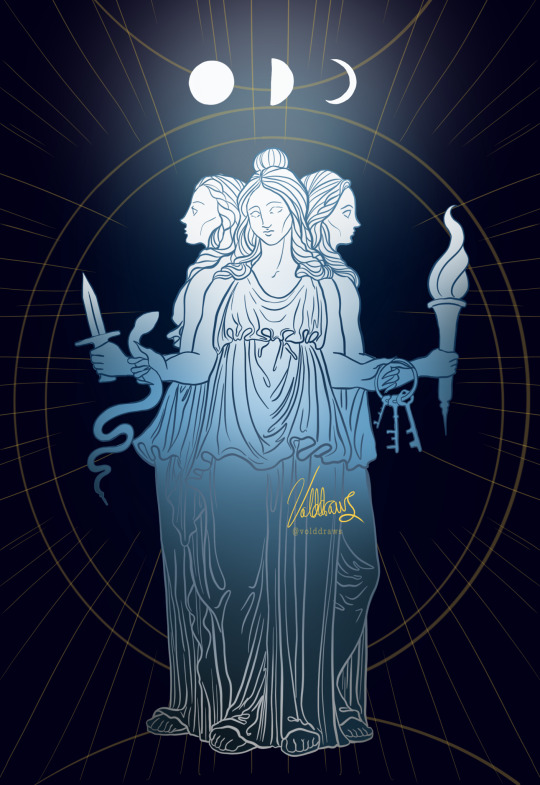
Classicstober day 31: Hecate💫🔮🗡️🌛
542 notes
·
View notes
Text
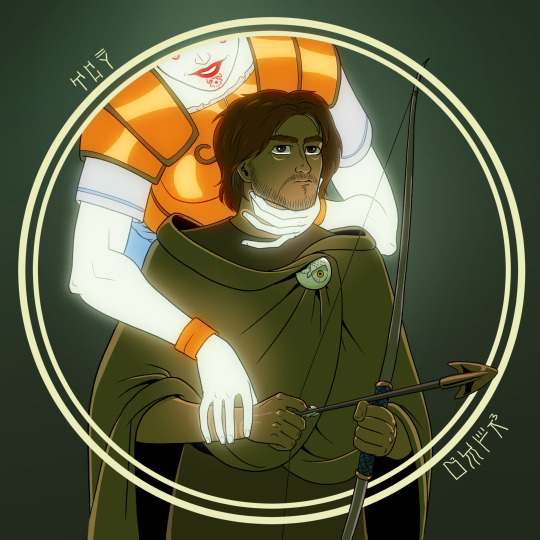
Classicstober Day 20: Odysseus (𐀃𐀉𐀮𐀄)
Odysseus is one of the most recognizable heroes of Greek mythology, maybe the most recognizable after Heracles/Hercules and various euphemisms (eg Achilles Heel and such). I borrowed Jorge Herran's hairdo for my interpretation of him because Epic has been on my mind and I deeply enjoy his interpretation of the character.
More than any other hero, Odysseus' relationship with his divine patron, Athena, is very close. Some interpretations might even argue too close, and maybe even dangerous…
What can a man say about Odysseus that hasn't already been said before? He is one of those mythological characters that is inescapable if you are dealing with ANY media that handles classical mythology. Polymetis seems to describe both him and his modern interpretations. I can't deny that I have a significant amount of Double Think about this man. To the ancient Greeks he would have been a perfect hero, but today… not so much. He murders without consequence, even if pragmatically, is filled with pride, and while his wife remains the model of chaste patience Odysseus is banging his way around the Mediterranean.
That said, it is very easy to make more palatable modern interpretations of him. He's almost as easy to sanitize as Perseus.
My depiction of him here is probably toward the end of his wanderings, maybe even right before unleashing his bow on the suitors. Since he is supposed to be dressed in beggar's rags his costume took very little research; it's just layers of cloth used as a cloak worn over a tunic. The only little addition I made is an ivory pin in the shape of an owl's face to show Athena's favor.
Athena, on the other hand, was a bit more challenging in pose and costume. I have mentioned before I try to abstain from direct depictions of the gods, but in this piece I wanted her influence on Odysseus to be palpable. The hardest part was making her armor as a war-god. Bronze age panoplies have been discovered and they seem to have been the pinnacle of protection, but I personally loathe the look of them so I decided to go with some Mycenaean vase-painting inspired armor. Although I usually think Athena's theme color would be green to reference her connection to olives, with this one I wanted her to be blindingly gray and white and terrifying.
It is a relatively modern concept to really depict the gods as evil, especially between Athena and Odysseus, but I kind of wanted to suggest that with her pose but still leave it ambiguous. Is the hand on his neck a tender caress, or a promise of a choke? Is she guiding his aim with a gentle touch, or is she forcing him to knock the bow and unleash the bloodshed?
#classicstober#classicstober2023#classicstober23#odysseus#the odyssey#athena#ancient greek mythology#mycenaean#linear b#tagamemnon#greek mythology#greek myths
195 notes
·
View notes
Text

Classicstober2023 day 21: Psyche
#classicstober#classicstober2023#my art#artists on tumblr#inktober#greek mythology#psyche#eros and psyche#eros x psyche#greek gods#ancient greek mythology
185 notes
·
View notes
Text
Classicstober 2023
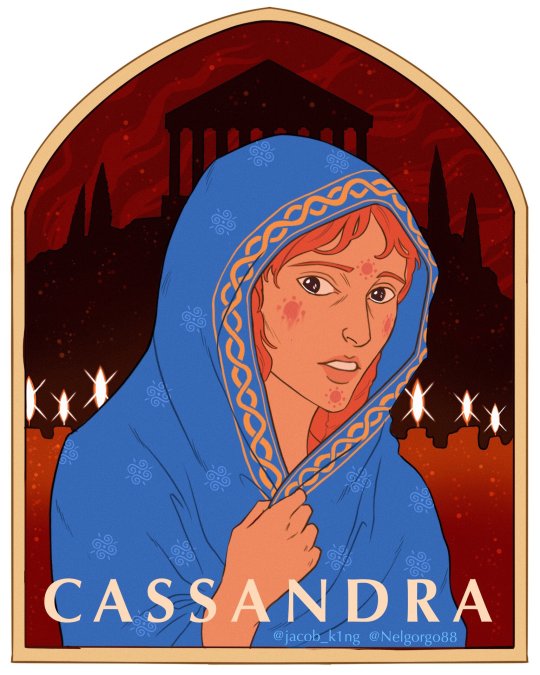
Day 1 - Cassandra

Day 2 - Medusa
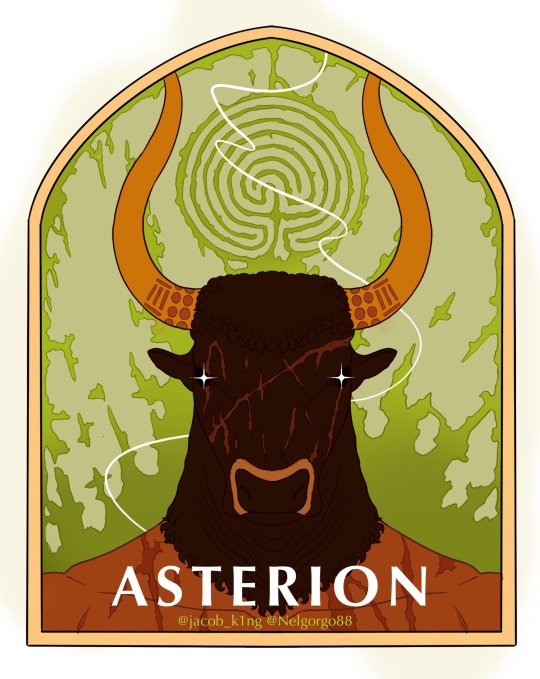
Day 3 - Asterion

Day 4 - Lycaon

Day 25 - Talos

Day 28 - Nyx
I skipped around a bit, but I did my part for last year's Classicstober from my friend @greekmythcomix! I hope you guys enjoy!
#ancient greece#illustration#artwork#greek mythology#art#classical mythology#digital art#mythology#greek myth art#classical literature#classicstober#classicstober2023#cassandra#medusa#gorgon#mythology and folklore#talos#minotaur#mythical creatures#nyx#greek goddess#asterion#lycaon#werewolf
102 notes
·
View notes
Text

For Classicstober Day 26 I remembered that I have this Thetis WIP I still can't finish
141 notes
·
View notes
Text

kassandra for classicstober
77 notes
·
View notes
Text

Under the adobe of Olympian palace 🏛️🏺🪔
Heavily inspired by Professor Jenks-Brown @greekmythcomix’s #Classicstober - even though deals with love magic, charms, amulets, & potions of the ancient Eastern Mediterranean-Near Eastern world (an idea from my friend, @aimee-maroux, who happened to be writing erotic stories of the Greek gods, also.)
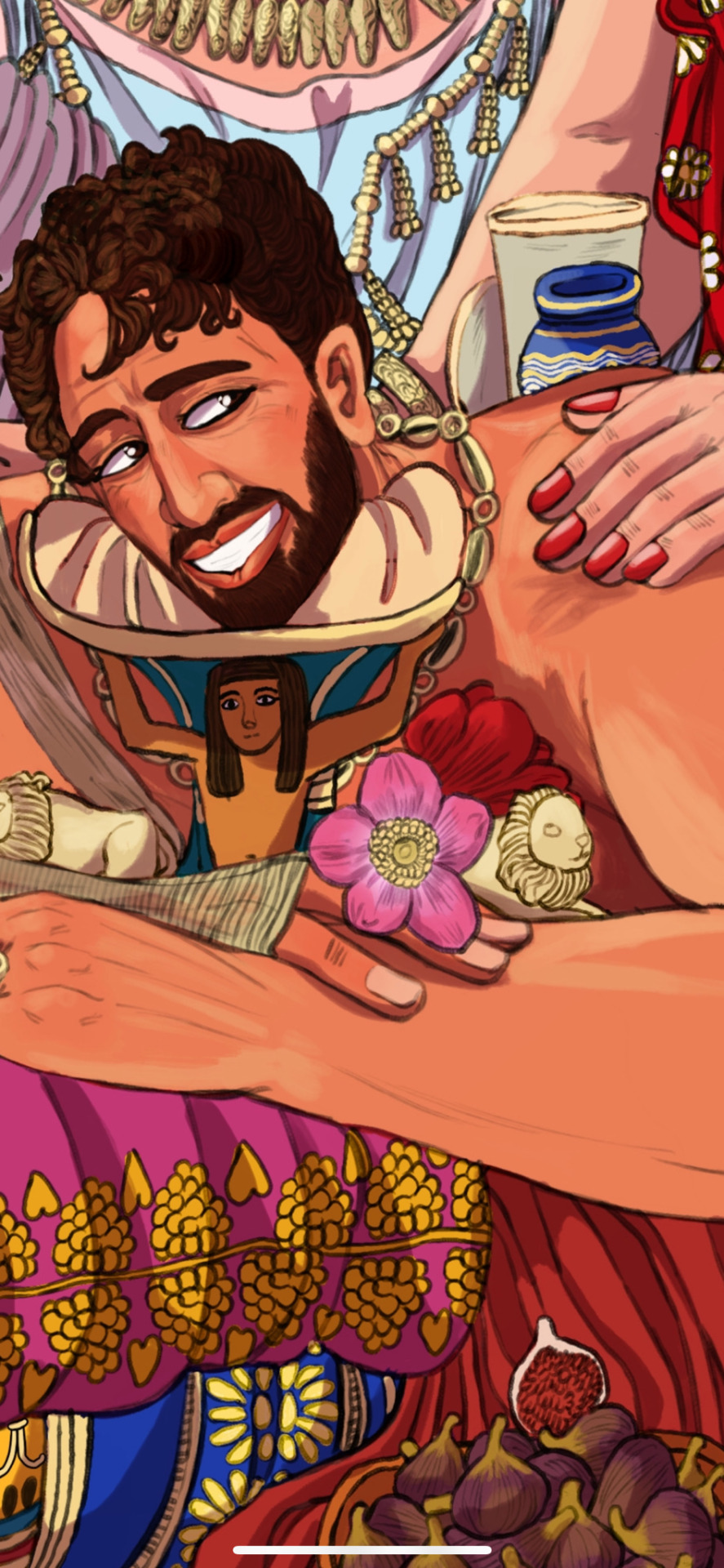
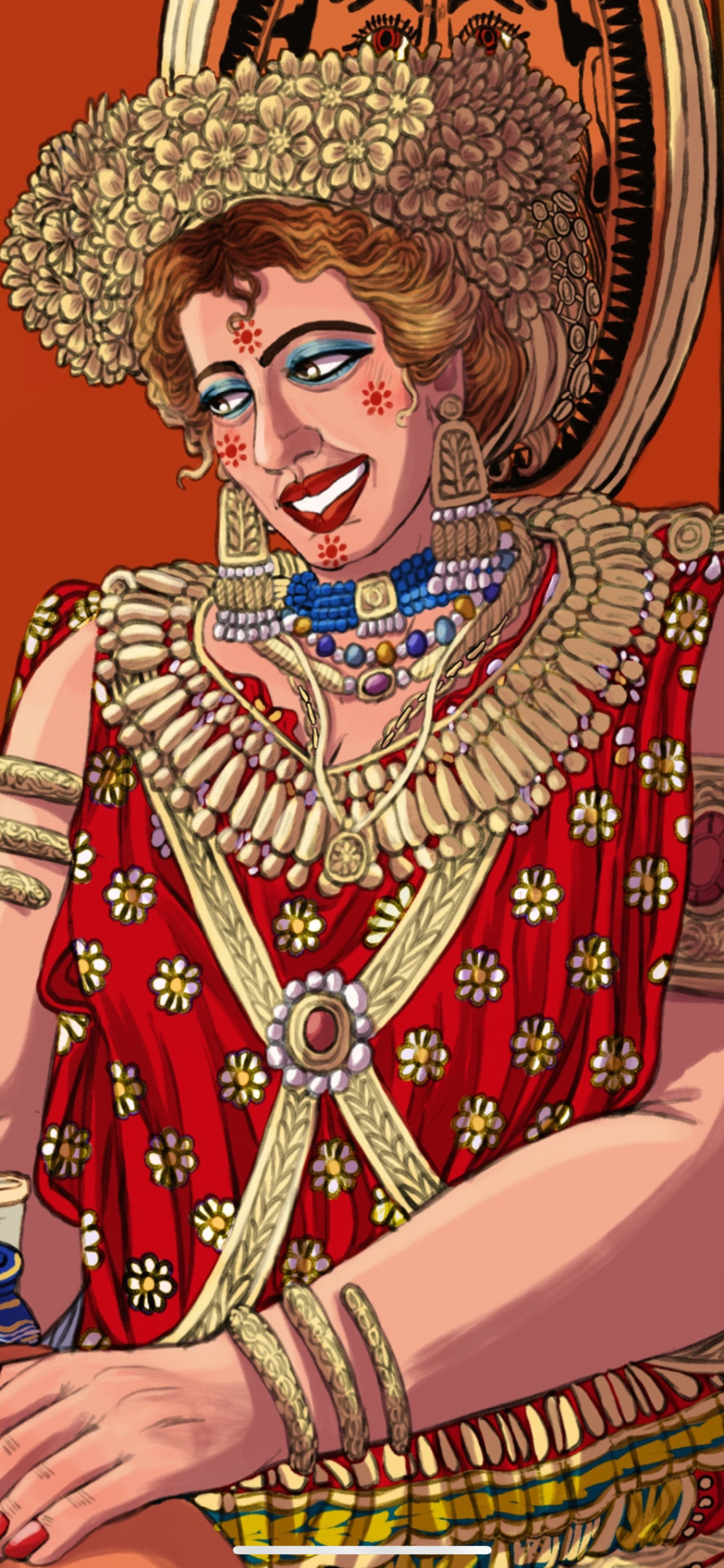
Ares feels worn down from carrying the heavy war armor and weapons all the time, while his wounds haven’t been healed enough yet. This often leads to Aphrodite’s messaging one of Ares’ wounds with her magic love potions/charms and both of them cuddling, smooching, and having their passionate nights later afterward. The magical love potions/charms of late antiquity are all Ancient Greek, Ancient Near Eastern (especially Babylonians, Assyrians and Phoenicians) & Ancient Egyptian; as her home, Cyprus is a melting pot of all of them.


From right to left on the 1st table: the Ancient Greek honey cheesecake, figs, pomegranates, dates, grapes, mandrakes, and Roman honey cookies (often filled with various types of nuts, opium seeds & almonds) While the mandrake tree - often associated with witchcraft & magic - wasn’t popular among the Ancient Greek society per se (as they often burning them as incense), it is widely used as a tree of love & fertility/ a fortune amulet in Ancient Egypt & Near East. As cousins of the nightshade, mandrake is both hallucinogenic & narcotic, and small usages of the tree have been used as a surgical anesthetic/ pain relief in ancient times. The 2nd table got the main vegetarian meal, of course: hearty red lentil saffron soup & Greek pita bread. I plan to add a silver tray of oysters to it, but I don't think it will fit in the aphrodisiac collection. The final table was filled with apples, wine & several love potions/ amulets that the goddess currently working on.
#ancient greek#aphrodite#ares#my art#mars#venus#ancient egypt#ancient near east#classicstober#classicstober2023#witchcraft#love magic#love charms#love amulet#love potion#Halloween
58 notes
·
View notes
Text

Classicstober day 17: Atalanta🦁🏹
#classicstober#classicstober2023#tagamemnon#atalanta#atalanta greek#greek mythology art#greek mythology#atalanta art#atalanta fanart
374 notes
·
View notes
Text
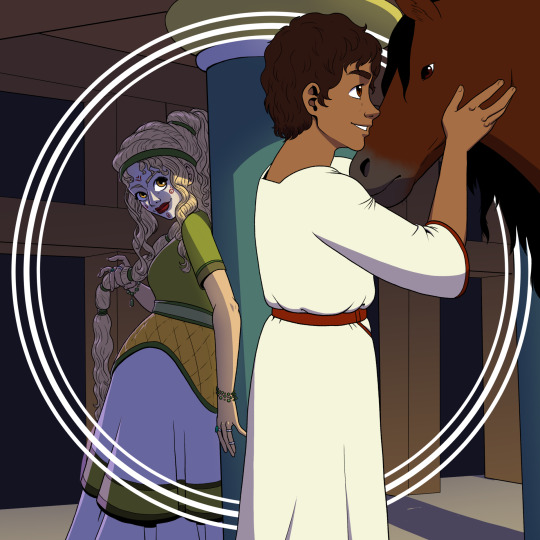
Classicstober Day 18: Phaedra (𐀙𐀂𐀉𐀨)
Phaedra was Ariadne's sister and married Theseus to become Queen of Athens (that must have been a WILD Christmas dinner). Things were good until Theseus' son by the Amazon queen dropped by for a visit. His name was Hippolytus (𐀂𐀢𐀬𐀵)…
Phaedra's story isn't quite as well known as many others in greek mythology, outside of a few tragedies and operas. The nature of the beast for most of these stories is that there are a couple of versions and no one can say which one is the 'real' one, but Phaedra's story, depending on the version you go by, can have wildly different vibes.
As I mentioned, she was Ariadne's sister. In some versions, when Ariadne helped Theseus defeat the Minotaur and escape, Phaedra was with her and part of Theseus' crew when he decided to abandon Ariadne on Naxos, eventually becoming his wife in Athens. In others, Phaedra is ignorant of the role Ariadne played in Theseus' victory and is instead sent to Athens to marry him for a political alliance. The implications of both versions are fascinating from a story-telling perspective. If Phaedra left with Theseus, just how complicit was she in leaving Ariadne behind? If their marriage was purely political, what did she think of the man who had just abandoned her sister? In the end, though, the important part (story wise) is that she marries Theseus and becomes Queen of Athens.
I depicted Phaedra here in her full queenly raiment. Yes, Athens was a purely Mycenaean settlement at this time, but the Mycenaean woman's fashion borrowed LOTS from the Minoan and considering where Phaedra was born she deserved a more Minoan look. That's why she has that quilted-looking over-garment on her dress. I made her palette green to represent her role as queen of Athens, and since Athena is the goddess of olive trees it made sense to me to lean into it. She is also blonde and amber-eyed to show her connection to Helios through her mother, Pasiphaë.
The architecture here is based on Minoan buildings. I imagine that inside the Cyclopean walls of Mycenaean Athens they could afford to make things more royal and less military-pragmatism. Athens is known for being a center of intellectualism in the ancient world (an image they painted themselves with), but even though this scene is set many centuries before the height of Classical Athens' power I decided to lean into that here too.
As for Hippolytus… the sources we have for the ancient Amazons are vanishingly rare. Most scholarship has focused on the Phrygians during the Classical Period, and I was able to find precious little reference for the Bronze Age Phrygians that might represent the historical Amazons. I did find one reconstructed garment, and even though it was very plain (and probably mean for a woman) I decided to put Hippolytus in it anyway. The Amazons were practical warriors, so I doubt that, as a child, Hippolytus would have had any other clothes than what his mother had. I also decided that he should be tall, taller than Theseus, as the Amazons were said to stand taller than normal men.
I could go into more details on the very disastrous story between Hippolytus, Phaedra, and Theseus, but I think it falls outside the purview of this piece. It is a fascinating, compelling story, though, so if you have made it this far into my ramble then I recommend checking it out.
#classicstober#classicstober23#classicstober2023#phaedra#hippolytus#greek mythology#ancient greek mythology#greek myth art#mycenaean#linear b#tagamemnon#amazons
194 notes
·
View notes
Text


Classicstober Day 14: Helen (𐀁𐀩𐀛/𒄭𒇷𒉌)
Helen of Troy… Helen Queen of Sparta… Helen Princess of Sparta… Helen the daughter of Leda and Zeus… the face that launched a thousand ships wore many masks over the course of her life but one thing that remains the same is how compelling she remains as a character. Many thanks to @symeona for helping me with her look!
Helen is a character intrinsically associated with her appearance, but early sources do not describe her at all outside of demonstrations of her status. For this piece, I have borrowed from two sources. The first is symeona, who's excellent translations on Ancient Greek color theory informed my take on Achilles. The second was that wretched and accursed fnckboy Ovid, who described Helen's mother Leda as having 'snowy white' skin and black hair. Since Zeus appeared to Leda in the form of a swan, and considering how pale Leda was, I decided to make her somewhat swan-like in appearance, with big black eyes and naturally ruddy lips to seal the deal.
First, let's talk about Helen the Spartan (rendered here in Linear B as 'Eleni of Laconia'). Despite mainly being known for her role in the Trojan War, Helen lived the majority of her life in Sparta and her husband Menelaus claimed the throne of Sparta through her. Laconia and Sparta are some of the oldest sites of Mycenaean culture, so Helen got to be depicted as Mycenaean as all getout. The high-piled hair, the diadem, the open tunic, and the bracelet are all very common in depictions of Mycenaean and Minoan women. She also has very elaborate florets to mark her status. The red fabric and large gemstones mark her wealth too i completely forgot to draw in the necklace she wore in the sketch version.
I mentioned before in my picture of Cassandra and Hector that I am basing the Trojan looks heavily on ancient Hittite clothing, and this is no exception. I know the movie Troy sucks for lots of reasons, but I did like that they made the Trojan theme color this very rich blue so I decided to add that here; dark, rich colors in general are very expensive to produce, so even if it's not red the saturation makes the cloth very expensive and a mark of royalty. I based her clothing and jewelry off a Hittite statue, but I decided to omit the tall hats that Hittite women appear to wear under their veils; I kind of wanted that to represent status, so only Andromache and Hecuba would wear the tall hats if I depict them.
I was not trying to make a commentary with it, but it does strike me how conservative the veiled, tunic wearing Hittite woman looks compared to the open-bodiced Mycenaean woman. That could easily be read into, but I'm just going to leave it as depiction and not try to ascribe any symbolism to it.
The decorative circle around Helen represents several things. Horses feature prominently in her life. The Trojan Horse is the most well known, but the wedding oath that Tyndareus made Helen's suitors swear to was sealed with the sacrifice of a horse too. Anemones are a sacred flower to Aphrodite (long story) and the white lilies seem like a fun way to evoke the 'pure woman' image.
Also in the circle are depictions of Eris' golden Apple of Discord. For the life of me, I could not find any translation related to fairness or beauty in any Mycenaean dictionaries so I had to cheat: "𐀴 𐀏𐀪𐀯𐀳𐀂/ti ka-ri-se-te-i" is just a phonetic transliteration of ΤΗΙ ΚΑΛΛΙΣΤΗΙ (tē(i) kallistē(i)), translated as 'for the fairest.'
#classicstober#classicstober2023#classicstober23#helen of troy#helen of sparta#greek mythology#ancient greek mythology#tagamemnon#linear b#mycenaean#hittite#hittite cuneiform#cuneiform
190 notes
·
View notes
Text

Classicstober Day 13: Arachne (𐀀𐀨𐀏𐀕)
Arachne was a mortal woman and a weaver beyond compare. She claimed that her skill surpassed even the gods'. An old woman warned her in a cracked voice:
"Be careful what you say, child; the gods loathe hybris."
"I'm not afraid of the gods. Even if Athena, goddess of weaving herself, appeared before me I know I can make a better tapestry than her!"
Arachne clearly had no idea she was living in Bronze Age Greece, because when an elder warns you about the ways of the divine it is ALWAYS a god in disguise.
Long story short, she is the reason spiders can weave so well.
Those of you who know me, and those of you who take the time to read these 'behind the scenes' things know that I do lots of research, but sometimes there just are no resources for me to draw on. Case in point, we know that the Mycenaeans had looms like the one I depict here, but as far as I know no Mycenaean tapestry has been preserved. This is not unexpected, since perishables like cloth can't really survive 3000 years without lots of luck and/or intentional preservation, but it also left me with a question of how Arachne's tapestries might have looked.
While we have some preserved Mycenaean and Minoan frescoes, I decided to not really draw from those for Arachne's tapestry. Her art was supposed to be breathtakingly realistic, so I opted from a more naturalistic, if a mite stylized, rendering of a woman. Perhaps a little anachronistic, but Arachne was a prodigy.
Speaking of which, Arachne is wearing a typical Mycenaean skirt and tunic but this piece finally gave me a good chance to show off Mycenaean makeup. Women, when depicted in Minoan and Mycenaean art, are often very pale and sometimes their faces are decorated with red florets on the forehead and cheeks. Arachne is not royal, but she is incredibly proud. Therefore I decided she would powder her face and rouge her lips, almost making herself look royal. The florets are just dots on her face, but the extras added to her forehead let me evoke the spider eyes she will bear in the near future.
Gods often take the appearance of the elderly (Zeus, Hera, and Athena all come to mind taking this disguise), and for whatever reason I have always had a vivid image of what Athena's mortal guise would look like. I know black was usually a very difficult color to dye, making it reserved for the wealthy, but maybe because of the old women in Portugal I grew up seeing the archetypal Old Woman is wearing black and using a shawl.
I would also like to formally apologize for not including the Linear B name for Athena, which is preserved: 𐀀𐀲𐀙
#classicstober#classicstober23#classicstober2023#arachne#tagamemnon#greek mythology#ancient greek mythology#mycenaean
237 notes
·
View notes
Text

Classicstober2023 day 20: Odysseus
Odysseus arrives at Ithace
#greek mythology#classicstober#classicstober2023#odyssey#the Odyssey#Odysseus#homer#inktober#my art#artists on tumblr#digital art#ancient Greek mythology#tagamemnon#ancient Greece
197 notes
·
View notes
Text
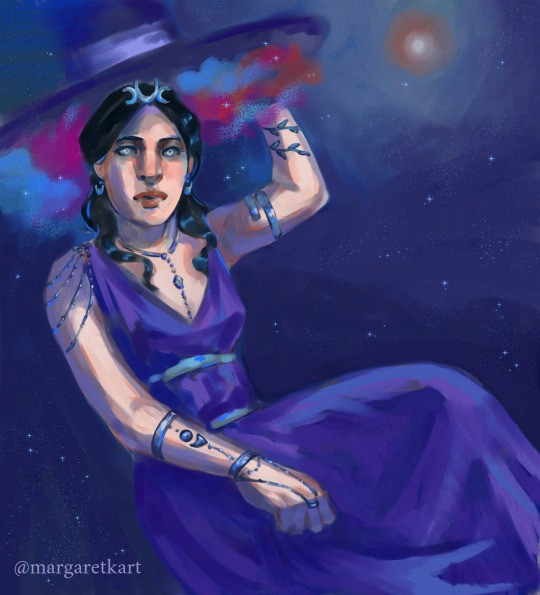
Classicstober day 31: Hecate
#witchy hour is here#hecate#hecate deity#greek mythology#greek gods#witchcraft#witchblr#art#illustration#artists on tumblr#commission#character design#ClassicsTober#ClassicsTober2023#witch
161 notes
·
View notes
Text
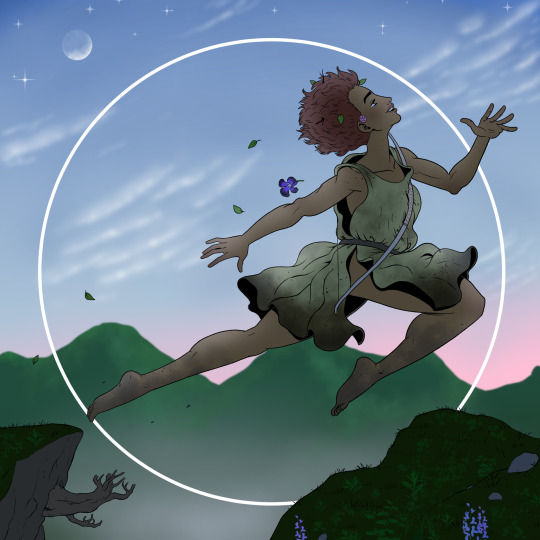
Classicstober Day 17: Atalanta (𐀀𐀲𐀨𐀙)
One of the few women in Greek mythology who is known for her own sake. She was an athlete without peer, raised by bears, and she even sailed with Jason on the Argo (depending on what version you like).
Unlike most of my pieces for Classicstober, refreshingly little research needed to be put into Atalanta. The best descriptions of her I could find described her with a sleeveless knee-length tunic, so that's what I drew. Although I still imagine her living in the Mycenaean period, her outfit is a bit of a call-forward to the classical Greek tradition of folding a sheet in half and calling it a garment.
Atalanta's story is really cool, if a bit muddied on account of there being apparently two separate canons about two separate women named 'Atalanta,' but I prefer the interpretation of both these accounts being true and filling her life with bold, free adventure. I'm not deluding myself about how her story ends, but I did not want to show that. I just wanted to see her running free and wild through Arcadia.
#classicstober#classicstober23#classicstober2023#atalanta#atalanta greek mythology#greek mythology#ancient greek mythology#greek myth art#linear b#mycenaean
175 notes
·
View notes
Text
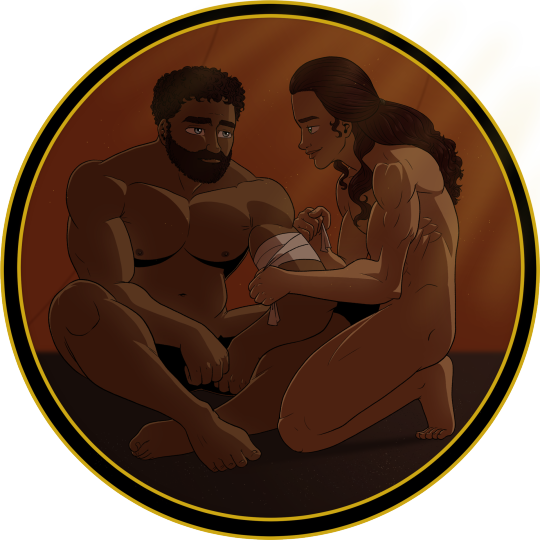
Classicstober Day 9: Achilles (𐀀𐀑𐀩𐀄)
Achilles and his heel are one of those myths that everyone knows, but now thanks to Madelline Miller's The Song of Achilles and SuperGiant's Hades lots more people are up to speed on the Original Tragic Gays, so why wouldn't I pay tribute to that One Vase Painting that everyone knows about while also using my own designs for these two to celebrate Achilles' day?
Patroclus and Achilles actually get some descriptive terms applied to them. Patroclus is described as bearded, dark haired, and gray-eyed, so I leaned all in on that, maybe a little self-indulgently, to make him a very handsome man.
Achilles is described as green-eyed, but one particular word that is used describe him is xanthe, which is used to describe his hair. In modern Greek it translates to blond, so many artists have rendered Achilles with a mop of shining blond curls. No shade on them, but as far as my research shows the classical Greeks would have called that color 'white,' not xanthe.
I had actually read a very interesting article about ancient Greek color descriptors (thank you @symeona for sharing it and for her own incredible insights on the translation) so with those in mind I decided to render Achilles with ruddy, chestnut hair rather than very light colors. Achilles also gets a more lean build and a prettier face than Patroclus because he was able to pass as a girl before the Trojan war.
Still, both of them were warriors so I wanted them to be Absolute Units, just different flavors of unit.
I can be a little self-indulgent sometimes, OK!?
#patroclus#achilles#achilles x patroclus#patrochilles#classicstober#classicstober23#classicstober2023#greek mythology#ancient greek mythology#achillian#tagamemnon
129 notes
·
View notes
Text

Classicstober Day 12: Theseus (𐀳𐀯𐀄)
I can't deny that I am kind of personally jaundiced against Theseus (because he sucks) but jumping into a maze with a people-eating monster to save 13 complete strangers is actually a pretty stand up thing to do.
Someone on insta asked me if I had any thoughts on the Minotaur design of Asterion, since I had depicted him as a baby on his mother's lap on that day, and I replied that he would probably look wretched.
Thinking about it more, I decided to go fully wretched for Asterion's appearance. After Minos traps him in the Labyrinth, Asterion gets very little company, if any, so he eventually loses his concept of hygiene and having any care for his appearance. There is probably precious little water in the maze, so any dirt that sticks to his hair remains in place. Dried gore from past victims remain, staining his hands and face. His nails grow long, thick, yellow, and cracked where they have torn through flesh. I imagine that Minos would fear that Asterion might make friends with any prisoner tossed into the Labyrinth, so he makes sure his beast is ravenously hungry; too hungry to think before his quarry is introduced.
Despite being massive and powerful, Asterion's constant near-starvation keeps him from growing into the bulky, massive bull-man we have come to expect. He also is not invulnerable; his body is scarred from where his victims managed to get a shot in. Scratches from nails and even some rocks prized up from the floor are visible, and one particularly vicious tribute managed to bite off part of Asterion's ear before they died.
All this combines to make a Minotaur that I actually find scary. Most of the Bulky Bull Man images are intimidating but not frightening. I feel like this version of the Bull of Minos looks like something out of a horror movie.
All in all, Asterion is a tragic figure. Born between worlds, a shame to his family, a punishment from the gods made into living flesh, and made into a monster to serve Minos' terrible will.
Theseus, on the other hand, kind of sucks as a person and this is a hill I will die on, but by this point in the story he has just done something very selfless and heroic: trade his own life for that of a complete stranger in a wild attempt to defeat the evil that threatens them. I modeled Theseus' build after power-lifters; his test of character that began his hero's journey was lifting a massive rock, after all. Theseus also has two fathers; the mortal Aegius and the god Poseidon (it's a long story). To reflect this I drew him with heterochromia. The dark eye is from Aegius, the light eye is from Poseidon.
The thread Theseus is holding is the end of Ariadne's Clew. While as far as I could find it had no inherent magical properties (although I would not put it past Daedalus to have made some of his crafts with magic) I decided to make it glow so I could have a secondary light source to really push the scariness of the scene. I think it turned out very well.
#classicstober#classicstober2023#theseus#the minotaur#greek mythology#ancient greek mythology#tagamemnon#mycenaean#linear b
100 notes
·
View notes